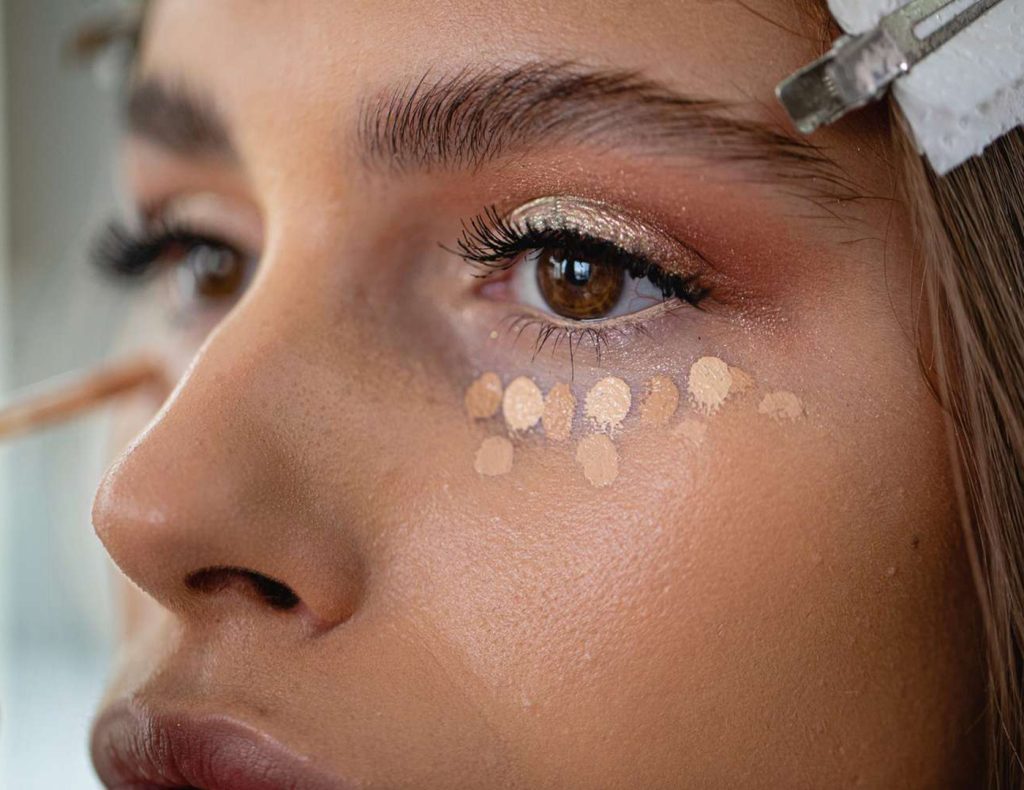Concealing is a crucial step in makeup, not only helping us cover up minor imperfections on our face but also enhancing the overall flawless look of our makeup. However, while applying concealer seems straightforward, many people tend to make common mistakes, leading to unsatisfactory results. Today, I’ll share how to avoid these common concealing errors and provide some helpful tips to effortlessly create a flawless, natural base.
1. Using the Wrong Shade
Many people overlook the importance of choosing the right concealer shade and simply pick a shade that “seems right.” However, selecting the wrong shade can backfire, such as using a concealer that’s too light or too dark for your skin tone. This can make the under-eye area more noticeable or make imperfections stand out even more.
How to Avoid the Mistake:
When choosing a concealer, it’s best to match the shade to the area you need to cover. For dark circles with purple tones, go for a yellow-toned concealer to neutralize them. For redness from acne or broken capillaries, choose a green or yellow-toned concealer. The right tone helps the concealer blend seamlessly into your skin and creates a more natural effect.
2. Using Too Much Concealer
Many people apply a thick layer of concealer because they’re worried about not covering enough. While concealers are designed to hide imperfections, over-applying can make your makeup look heavy and unnatural, drawing even more attention to the areas you were trying to conceal.
How to Avoid the Mistake:
Less is more when it comes to concealer. Apply it sparingly to the areas you need it, then blend with your fingers or a makeup sponge for a seamless finish. If you feel that more coverage is needed, build up in thin layers, ensuring each layer is blended before adding another.
3. Using the Wrong Tools to Apply Concealer
Many people prefer to use their fingers to apply concealer, but the warmth from your hands can change the texture of the product, affecting its coverage. On the other hand, using the wrong tools, like a large brush or an unsuitable sponge, can lead to uneven coverage or ineffective concealment.
How to Avoid the Mistake:
The ideal tools are a small to medium-sized concealer brush or a damp makeup sponge. A concealer brush with a flat edge is great for precise application on smaller areas like the under-eye, around the nose, or on blemishes. A damp makeup sponge is perfect for pressing the concealer into the skin, creating a natural, seamless finish. Make sure to clean your tools regularly to avoid the buildup of bacteria that could cause skin issues.
4. Not Using Concealer at All
While many people rely on foundation for an all-over coverage, foundation often isn’t enough to cover areas that need extra attention, such as dark circles, discoloration, or blemishes. That’s where concealer comes in—it’s designed to target specific imperfections and enhance the overall makeup look.
How to Avoid the Mistake:
When aiming for a flawless makeup look, don’t skip the concealer step. While foundation helps even out the skin tone, concealer’s precise covering ability is what targets blemishes, dark circles, and other imperfections. For example, the under-eye area, blemishes, and around the nose need that extra attention from a good concealer to create a flawless, uniform complexion.

5. Concealer Drying or Clumping
Some people experience concealer drying out or becoming cakey on their skin, especially when they use the wrong product or fail to set it with powder. This can result in an unnatural finish, emphasizing imperfections instead of concealing them.
How to Avoid the Mistake:
To prevent drying or clumping, choose a concealer that is suitable for your skin type, especially if you have dry skin. After applying concealer, gently press with a makeup sponge to ensure it blends into the skin. Afterward, set the concealer with a light dusting of translucent setting powder to prevent it from settling into fine lines or creasing.
Concealing Tips:
- Match Concealer to Your Overall Look: When applying concealer, don’t just focus on the isolated areas. After finishing your makeup, go back and add concealer where necessary, ensuring the concealer blends well with the rest of your makeup.
- Don’t Over-Apply: More isn’t always better. Applying too much can make the imperfection more visible. Use a small amount and build up if necessary.
- Choose the Right Concealer for Your Skin Type: Different skin types need different concealer formulas. If you have dry skin, go for a hydrating concealer. For oily skin, choose an oil-free formula that can control shine and stay in place.

Recommended Concealer Brands:
- NARS Radiant Creamy Concealer
NARS Radiant Creamy Concealer is excellent for uneven skin tones, with a smooth texture that covers dark circles, blemishes, and redness while still maintaining a radiant, natural finish. It works well for both dry and combination skin. - Tarte Shape Tape Concealer
Tarte Shape Tape Concealer provides great coverage without feeling heavy. The formula is lightweight and ideal for oily and combination skin types. It doesn’t dry out or cake, making it perfect for long-lasting, flawless coverage.
Concealing techniques may seem simple, but they require attention to detail to avoid common mistakes. Choosing the right shade, applying the right amount, using appropriate tools, and setting your concealer properly are key steps to achieving a flawless, natural finish. With these tips, you can easily master the art of concealing and create a makeup look that enhances your natural beauty. I hope these tips help you create a flawless base and feel confident in your makeup every day!